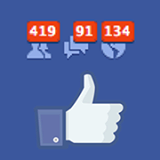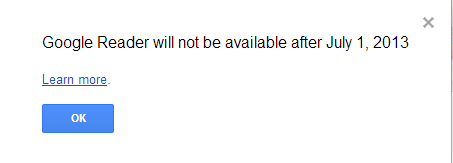Numbers never lie - but they change how we behave
Full disclaimer: I am not much of a fan/user of Facebook. I check it very infrequently, almost never see things like messages or friend requests in a timely manner, and really only keep my account active for HR Happy Hour Show page purposes. So take that for what it is worth and as preface to what I want to talk about today.
I caught a really interesting piece on The Atlantic titled 'How Numbers on Facebook Change Behavior', a review of a study conducted by Ben Grosser that attempted to understand just how much that Facebook metrics like the number of people that 'liked' a piece of content or the number of friends that a Facebook user has goes on to influence user behavior on the site. 
I recommend reading the entire piece, particularly if you are a big Facebook user, but I can give you the short (and maybe kind of obvious) conclusion in one sentence: You (and most everyone else) are more likely to 'like' something on Facebook if lots of other people have 'liked' that same thing.
From the Atlantic piece:
To keep its 1.3 billion users clicking and posting (and stalking), Facebook scatters numbers everywhere. While it collects many metrics that users never see, it tells users plenty of others, too. Facebook tells you the number of friends you have, the number of likes you receive, the number of messages you get, and even tracks the timestamp to show how recently an item entered the news feed.
And these numbers, programmer and artist Ben Grosser argues, directly influence user behavior by being the root of Facebook addiction. In October 2012, he set out to find exactly what Facebook's metrics were doing to users after noticing how much he depended on them.
He did this by creating a browser extension, that when activated, 'hides' the numbers from Facebook. Instead of seeing the little red number alerting you to the count of notifications you have, you are just informed that you have notifications. And you won't see the that '18 people like this' but rather that 'people like this', that kind of thing.
Grosser then examined what happened and recorded the observations from some of the 5,000 or so people that installed the tested the 'numbers hiding' extension.
And again, the findings were probably not terribly surprising. People tended to report (and demonstrate) that when visible the Facebook numbers fostered more competition, (more likes the better), manipulation (removing posts that did not have enough or any likes), and probably most importantly, homogenization, (liking posts that many of your friends had already liked).
Why am I writing about this, as a self-declared non-user (essentially) of Facebook?
Well because everyone else uses Facebook, so what happens there sort of matters in a big-picture sense and I find that important to keep in mind. But also, for what these kinds of findings might mean for the systems and tools that we use in the workplace as well.
Wouldn't it make sense for savvy (and admittedly unscrupulous) organizational communicators to not just message their workforces, but to imbue in these messages a sense of importance and value by gaming the system with additional 'likes' or upvotes or 5-star ratings - you get the idea? The kind of activity that gets restaurant owners in trouble on Yelp for example.
It really is not that much of a stretch, and I am sure this happens all the time, for companies to post on their blog or in their LinkedIn Group and then have a few dozen employees immediately 'like' the post, this setting off what they hope will be a snowball effect once other readers observe all of these 'likes.' And note, I am not talking about scammy 'like farms' or purchased Twitter followers or YouTube plays. I am talking about real people taking actions and reacting the actions of others.
Is that really a bad thing or not, I suppose I am not sure.
But we have always known, even in the age of Facebook that popular doesn't necessarily equal quality.
I wonder though, even in the communications from our friends and colleagues, if we should also realize that popular doesn't always equal popular as well.
Happy Tuesday.

 Steve
Steve


